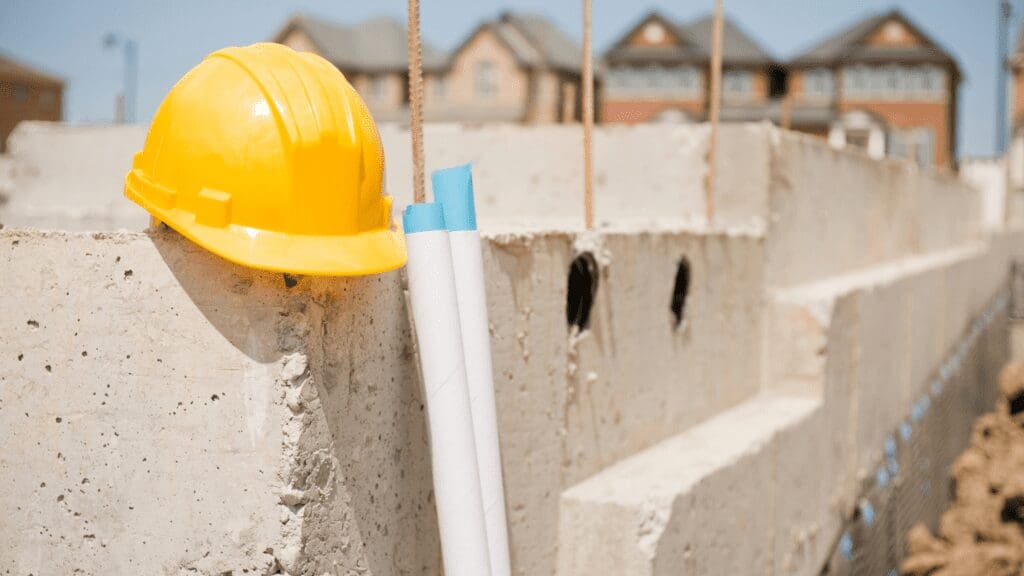In the Greater Houston area, our soil is a mixture of different sediments, minerals, and varying amounts of organic and inorganic matter packed into clay-rich soil material. When a home is being built, the soil is excavated to make room for the foundation. This creates an empty “clay bowl”. Once the workers build the foundation and exterior walls, they use the soil that was initially removed to fill in the space around the edge of the foundation. The soil that is put back along the foundation is called backfill.
The problem is that, once disturbed, clay soil takes a long time to repack itself and become firm again. Despite being compacted with special equipment, backfill soil remains looser and fluffier, being therefore able to absorb more water than the compressed,undisturbed soil around it. Because water collects in the backfilled soil every time it rains, or there is a flood, it can accumulate beneath your foundation. This phenomenon is commonly referred to as the “clay bowl effect”.
How Worried Should You Be About the Clay Bowl Effect?
The clay bowl effect can lead to a wide range of problems over time. So, it should be taken very seriously. The most common types of damage due to the clay bowl effect include, without being limited to:
- Persistent mold problems, particularly in the crawlspace and on the lower areas of the walls;
- Higherrelative humidity levels in the crawlspace and inside your home;
- Standing water around your foundation;
- Bowing walls;
- Horizontal, diagonal, and/or stair-step cracks developing in the foundation and/or ground floor exterior walls.
In addition to the aforementioned problems, standing water or excessive evaporation can saturate the soil underneath and around your home as well as different structural elements, such as concrete piers and slab, wood beams, wood studs, and steel reinforcements. Too much water could cause concrete to deteriorate, wood to rot, and steel to rust. Damage to structural elements could affect the core integrity of your home, causing cracked walls, bouncy orsoft floors, and sagging roofs.
Although any home built on clay soil can fall victim to the clay bowl effect, this phenomenon tends to be more common in new construction homes and in the homes built partially below thewater table. While serious structural damage is rare, a structural home inspection should be performed by a professional as soon as the first red flags pop up.
Preventive or Remedial Measures You Could Implement
Since the clay bowl effect poses a huge risk to your foundation and home, it’s important to take the right measures that allow you to prevent or, at least, mitigate the damage.
The first thing you can do ischeck your gutters and downspouts for clogs or damage. In most cases, gutters overflow when they’re clogged, too small, or when there’s too much rain. But the pitch and tilt of your gutters are also very important. If the pitch of a gutter is too steep, or the gutter is tilting away from your home, it may overflow. In addition, the downspouts should extend far enough in order to direct rainwater away from your foundation.
If your gutters and downspouts work as they should, but there is standing water in your crawlspace or around your foundation every time it rains, you shouldinstall a French drain. This system runs along the exterior side of your foundation to catch and divert rainwater away from your home. As a result, water and excess moisture will never get too close to your home. In addition to preventing water from affecting your foundation, aFrench drain can also be used to address current water damage. Because this system will slow down the rate of water infiltration, it allows the saturated soil around your home to eliminate excess water and moisture. Therefore, the soil under and around your home will eventually dry out. However, it’s important to make sure that the soil doesn’t become too dry, as lack of moisture can be as harmful to expansive clay soil and your foundation as too much water.
If the problem persists, you can alsoinstall a stormwater drainage well, also referred to as dry well, in your crawlspace. Since the purpose of a dry well is to collect excess water, water runoff will never accumulate in your crawlspace and under your foundation again. Once inside the dry well, the water will be diverted outside, away from your home.
Regardless of the condition of your foundation and the problems affecting it, our professionals at Allied Foundation can help! The solutions that we provide have been designed specifically for Houston homeowners, who encounter particular foundation problems caused by expansive clay soils. Prior to implementing any preventive or remedial measures for a foundation problem, it’s recommended that you schedule afree foundation inspection with our experts. Our comprehensive foundation inspection will indicate what the problem is along with its root cause, so our professionals can come up with the right foundation repair solution for your property.

